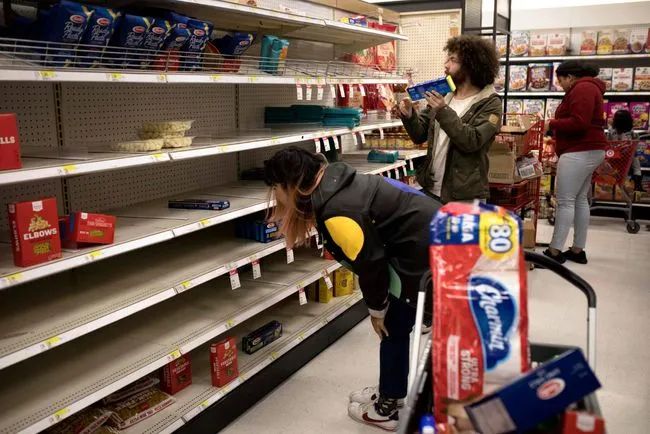According to a report by the United Nations Conference on Trade and Development (UNCTAD), soaring global container freight rates could push global consumer prices up 1.5 per cent next year and import prices by more than 10 per cent. Consumer prices in China are likely to rise by 1.4 percentage points, while industrial production could be dragged down by 0.2 percentage points.
Rebecca Grynspan, SECRETARY-General of UNCTAD, said: "Until shipping resumes, the current surge in freight rates will have a profound impact on trade and undermine social and economic recovery, particularly in developing countries. ”
01 Global consumer prices will rise by 1.5% overall
After the new crown outbreak, the global economy has gradually recovered, shipping demand has surged, and shipping capacity has been difficult to return to pre-epidemic levels. This contradiction has led to a near-surge in shipping costs this year.
For example, in June 2020, the spot price of the Shanghai-Europe Container Freight Index (SCFI) was less than $1,000 per $1,000/TEU, jumping to about $4,000/TEU by the end of 2020 and soaring to $7,395 by the end of July 2021. In addition, shippers face shipping delays, surcharges and other costs.”
The United Nations report said: "the analysis of the United Nations Conference on Trade and development shows that between now and 2023, if container freight rates continue to soar, the global price level of imported products will rise by 10.6% and consumer prices will rise by 1.5%."

Soaring sea freight costs affect different countries, and in general, countries with smaller volumes and higher imports as a proportion of their economies are naturally more affected. Small island developing States (SIDS) have been the hardest hit, with soaring sea freight costs pushing up consumer prices by 7.5 percentage points. Consumer prices in landlocked developing countries (LLDCs) are likely to rise by 0.6 per cent. In the least developed countries (LDCs), consumer prices are likely to rise by 2.2%.
02 Import prices and consumer prices vary from country to country
By country, the U.S. consumer price index will rise 1.2 percentage points and China 1.4 percentage points as shipping costs soar, while electronics, furniture and clothing prices will be the most affected by seaborne price increases by category, up at least 10 percent globally.
03 Economic growth and industrial production will also be affected
Soaring container transport costs will also drag down growth in major economies, the analysis said. If supply chains continue to disrupt, for every 10 percent increase in container freight, U.S. and euro zone industrial production will fall 1 percent and China's will fall 0.2 percent, the report said.
More than 600 container ships were stranded outside ports at the end of October, twice the level at the start of the year, according to Swiss logistics giant Kuehne-Nagel. The company predicted late last month that congestion at ports and routes would continue until at least February next year.
04 Where did the supply chain crisis go?
On the coldest Thanksgiving day in history, supermarkets are restricted to groceries: the timing is close to the two major shopping holidays in the United States, Thanksgiving and Christmas, but many U.S. shelves are simply not satisfied, originally only in the run-up to Christmas, the problem of out-of-stock, even two months earlier began fermentation. Global supply chain bottlenecks continue to affect U.S. ports, highways and rail transportation, and the White House has been more forthcoming that consumers will face more severe shortages during the 2021 holiday shopping season.
The global supply chain is currently facing a serious crisis. In recent days, U.S. stores, supermarkets and even hypermarkets, from food, beverages, clothing to daily necessities are often out of stock. Supermarket shelves are not well replenished, product choices are less, stores are not sure when to replenish, or even remove the shelf label. More large supermarket chains have also resumed their "buy-only" policy, limiting the number of household necessities such as toilet paper that customers can buy, as they did when the outbreak began. The supply chain crisis has put pressure on the global retail and transportation sectors, with some companies recently issuing a series of gloomy financial forecasts and the impact continuing to grow.

The White House is trying to get U.S. ports, rail and road transportation out of trouble and address the shortage of meat to semiconductors. But U.S. officials are still warning that the 2021 Christmas shopping season could face higher prices and severe shortages of goods, and that U.S. consumers, while not used to empty shelves, will need some flexibility and patience.
How on earth did this crisis happen? Multiple factors prevent goods from being delivered to the United States immediately. The first is the shortage of containers, which has resulted in container prices 10 times higher than before. According to Time magazine, a 40-foot container shipped from China to the U.S. before the outbreak cost about $4,700, rising to $21,000 in August. To ship goods from production to the United States now, higher costs must be paid.
The West Bank port of Sai is serious, and cargo ships take a month to unload: the problem remains serious. Cargo ships lined up on the west coast of North America can take up to a month to dock and unload, and consumer products such as toys, clothing, electrical appliances and so on are out of stock. In fact, the United States port has been very serious for more than a year, but it has deteriorated since July. Lack of workers: Lack of work has slowed port unloading, trucking, and replenishment of goods far less than demand.
U.S. retailers placed early orders, but the goods still couldn't deliver: U.S. retailers were scrambling to avoid a serious shortage. Most companies place orders and build up inventory early. Up to 63.2 percent of merchants placed early orders for the end of the 2021 holiday shopping season, about 44.4 percent placed higher orders than in previous years, and 43.3 percent placed orders earlier than before, according to UpS' delivery platform, Ware2Go.

There are even operators who rent their own boats, find air transport, and try their best to speed up logistics. Wal-Mart, Costco and Target, for example, all employ their own ships to ship thousands of containers from Asia to North America. Costco Chief Financial Officer Richard Galanti noted that three ships are currently employed, each expected to carry between 800 and 1,000 containers. However, if it is only small and medium-sized retailers or emerging brands, not only can not negotiate directly with shipping companies, the cost of hiring their own cargo ships, air transport is too high, and can not afford. Renting a cargo ship can cost as much as $1 million to $2 million a month.
The global economy, which has just recovered from the chaos caused by the outbreak, is facing severe shortages of energy, components, products, labour and transportation. The global supply chain crisis, which now appears to be unresolved, and with production costs soaring, consumers will clearly feel the price rise, and the US may not be so good this Christmas holiday season.
Contact: Manager Gao
Phone: +86-15932423630
Tel: +86-311-89276065
Email: sales@ht-wiremesh.com
Add: Wire Mesh Zone,Anping County,Hebei Province,China.